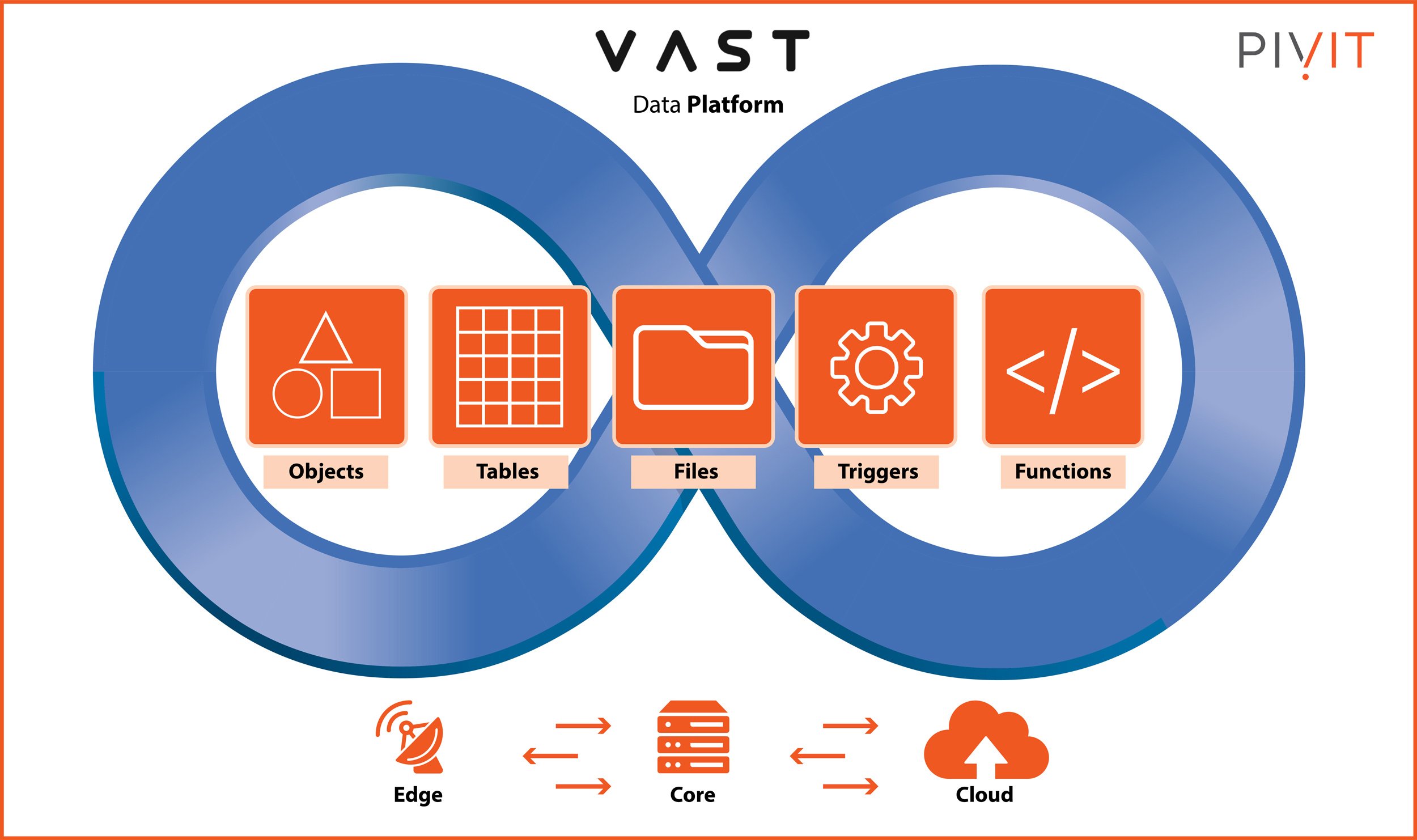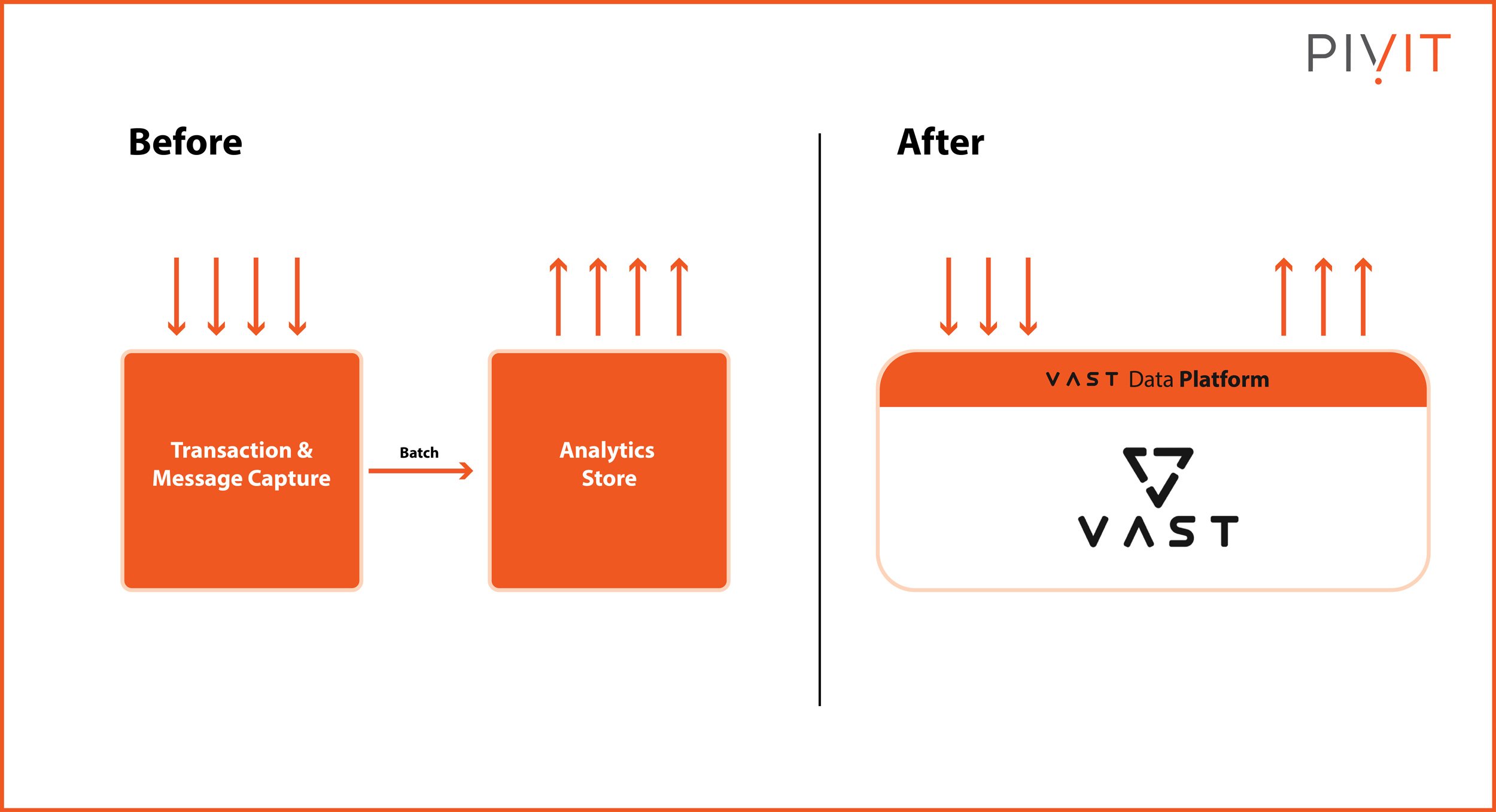VAST Data: Unified Data Platform for the Age of AI
%20VAST%20Data_%20Unified%20Data%20Platform%20for%20the%20Age%20of%20AI.png)
VAST Data has launched its Data Platform, designed for future artificial intelligence (AI) applications. In the making since the beginning of the company in 2016, the platform comes at a time when interest in AI and its possibilities is at an all-time high. It’s a unified storage platform that eliminates tiers, tradeoffs, and other complexities of data storage.
The company claims the architecture and the software solutions are for the next two decades of AI and high-performance computing. In essence, it’s a storage solution that goes beyond the traditional use of data storage, enabling businesses to adopt applications like deep learning and derive new value from their data.
This article takes a closer look at the VAST Data Platform, what it offers, what makes it different, and how it can help your enterprise fulfill its ambitions in the near and distant future.
VAST Data Platform
The VAST Data Platform is a unified storage management platform that consolidates all aspects of storage infrastructure. This includes on-premise hardware and the cloud. It includes all sorts of data: objects, files, and databases. Soon, it will also incorporate a computing framework to add intelligence to the storage layer.

The Data Platform consolidates the different VAST products, each designed to handle a specific data storage and management challenge. VAST DataStore handles object and file storage, emphasizing deriving value from unstructured data.
VAST DataBase is the company’s take on relational databases and query languages. DataSpace provides the framework for accessing all the data, from edge through to the cloud.
In simpler terms, the VAST Data Platform combines database, file/object storage, and a computing engine in a single pane, allowing enterprises to remove complex tiering and bottlenecks in storage. Most importantly, it introduces the capabilities of ingesting and analyzing unstructured data.
Of course, the platform is designed to work with all-flash storage, which VAST Data specializes in. It’s essentially hardware-agnostic so it can work with various flash storage equipment.
It’s sold as software but supported like an appliance. It has partnered with various hardware vendors to provide SSDs, NVMe fabrics, and computing resources.
Key Features
Here are the main features of the VAST Data Platform:
- Native support for different data types: It is a first-of-its-kind platform with support for tables (native or converted), data streams, notifications, and unstructured data, using protocols such as NFS, S3, and SMB.
- Real-time write buffer: The VAST Data Platform works on the proprietary VAST architecture, which is different from batch-based computing. It uses a real-time write buffer capable of capturing and manipulating data in real time. While it can easily handle small write tasks, it can also support large parallel write jobs. It stores all the data in a fast memory space based mostly on inexpensive, high-capacity flash infrastructure.

- DASE architecture: The VAST Data Platform works on a distributed systems architecture called DASE that eliminates communication and interdependencies between the logical units in the system. It also eliminates the serialization of data operation between cluster nodes, allowing the seamless scaling of parallel read and write operations.
- Global consistency: The platform decentralizes global transaction management through an architecture that employs deep buffers and synchronization across all locations where data is stored and processed. It allows for more data consistency and coherency, which extends from edge to cloud and on-premise data centers.
VAST Data Platform and AI
While the aforementioned features and benefits of the VAST Data Platform are promising, the most significant capability of this Data Platform and its underlying components is that it’s made for AI use cases.
VAST’s storage solutions offer the modernization of legacy applications, consolidation of data tiers, and structuring of object data, essentially the recipe for bringing AI to enterprise data. Instead of taking your data to expensive AI computing resources, the platform enables enterprises to bring AI to their own assets.
As large language models (LLMs) become even more sought-after, enterprises that wish to train models and use their data for AI applications will need a reliable data platform. VAST’s DataEngine brings this intelligence to data storage.
It’s a function execution engine consolidating on-prem and cloud storage into a single computational framework. It’s a serverless computing engine with supporting functions written in Python. There’s also an event notification system, as the engine combines event-based and data-driven architectures.
In the press conference announcing the platform, the VAST Data leadership talked extensively about the AI possibilities the Data Platform enables.
The platform, particularly the DataEngine, is designed to allow enterprises to solve problems using data they never thought of solving. And that’s what AI is all about: resolving problems of the world humans, for the most part, have been unable to resolve.
Preparing for a Future with AI
A survey by Equinix found that tech teams believe their current infrastructure can’t handle AI workloads. That’s primarily because the computing power AI jobs require isn’t what most enterprises’ typical workloads require. But that has to change if tech enterprises or businesses in any industry want to leverage the power of deep learning.
Many tech vendors are working on introducing equipment and software suites that can handle compute-intense operations such as machine learning. VAST Data is one such company, except their idea is radically different. They’re bringing AI computing to storage.
With recent developments in the storage space, including the release of VAST Data’s unified platform, it’s clear that storage plays a pivotal role in AI adoption. Solutions like VAST can enable enterprises to use their storage infrastructure and computing to generate value from data and solve problems.

